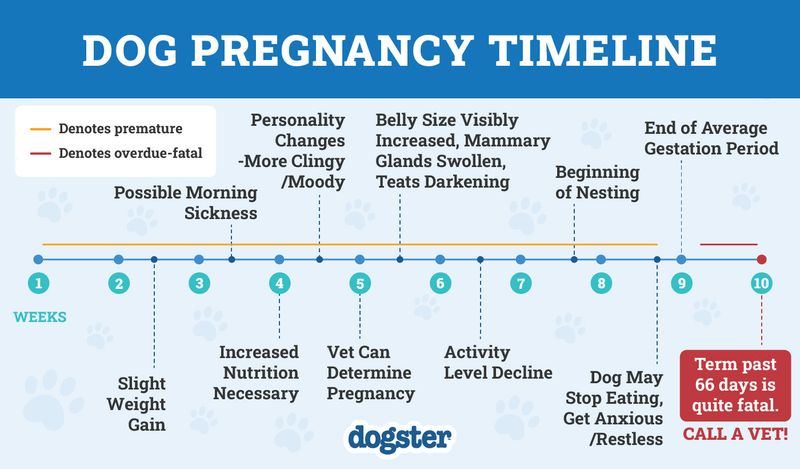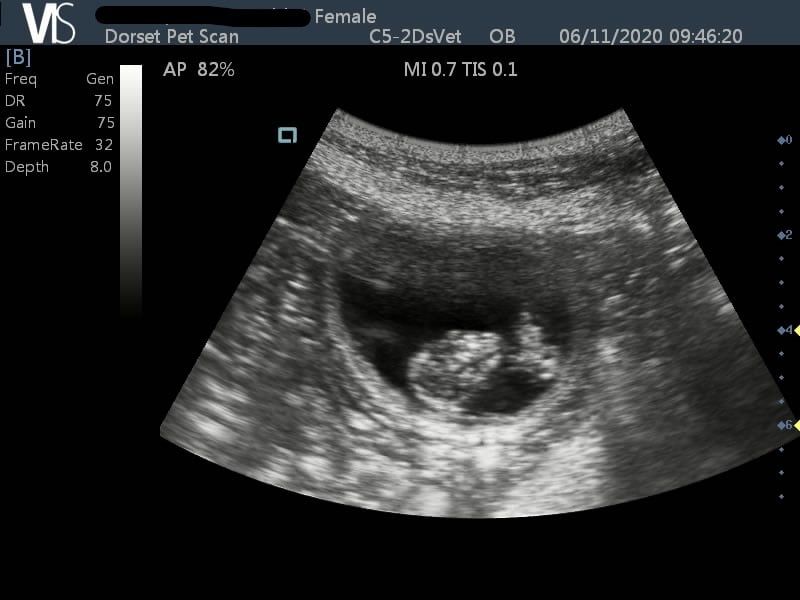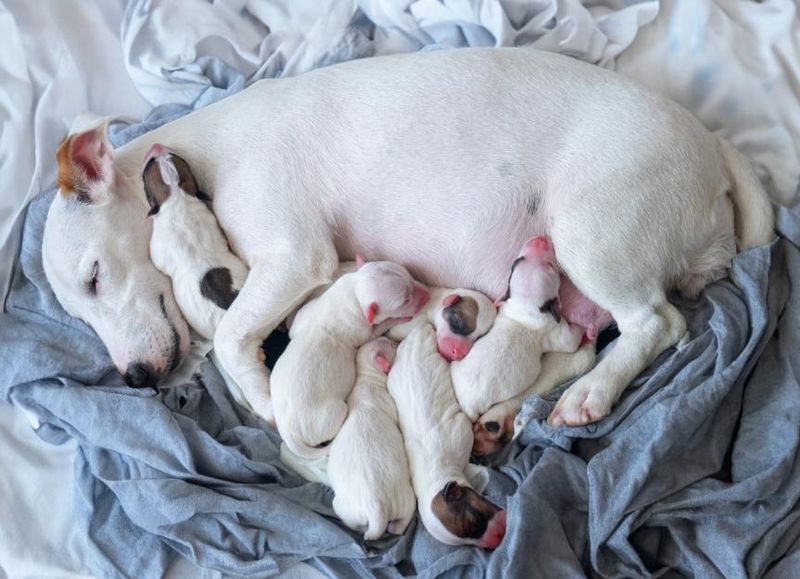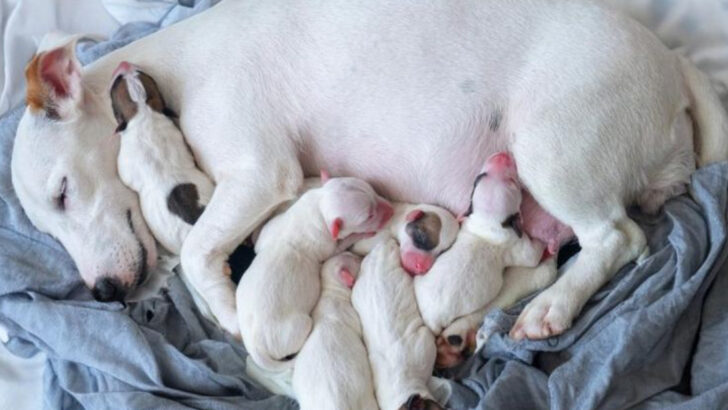Dog pregnancies fly by in the blink of an eye. Just around two months from start to finish—and boom, puppies everywhere. But don’t let the short timeline fool you. There’s a lot going on behind the scenes. From silent signs in the first weeks to midnight nesting and surprise litter sizes, canine pregnancies are full of twists. One moment she’s chasing squirrels. The next, she’s waddling with a belly full of future chaos. Whether you’re a breeder, a pet parent, or just obsessed with puppies, get ready. These short pregnancies are fast, wild, and anything but predictable.
Quick Gestation Period

While human pregnancies stretch over nine months, dogs complete their gestation in just about nine weeks. This rapid timeline means changes happen swiftly. From conception, the countdown begins, and within weeks, the embryo develops into a recognizable puppy shape. By the end of the first month, tiny heartbeats can be detected.
This quick progression requires diligent attention from pet owners. Ensuring proper nutrition and care during this brief period is crucial. For many, the swift pace highlights the incredible efficiency of nature. It’s a remarkable process that brings life into the world in such a short span.
Hormonal Changes

As with humans, dogs experience significant hormonal shifts during pregnancy. These changes are responsible for preparing the body for nurturing life. Progesterone plays a key role, maintaining pregnancy and supporting fetal development.
Behavioral changes often accompany these hormonal variations. Some dogs become more affectionate, while others might seek solitude. Understanding these shifts helps in providing appropriate care and comfort.
Witnessing such transformations can be fascinating, as they reflect the body’s readiness to welcome new life. The intricate balance of hormones demonstrates nature’s preparedness for childbirth.
Nesting Behavior

Nearing the end of gestation, dogs often exhibit nesting behavior. This instinctual drive leads them to prepare a safe and comfortable spot for their imminent arrivals. Owners might notice their pets rearranging bedding or selecting a particular area of the home.
This behavior is a natural preparation for the birthing process. It reflects the dog’s innate desire to create a secure environment for the pups. Observing this behavior offers a glimpse into the primal instincts that have been preserved through ages.
It’s an endearing sight that connects us to the timeless cycle of life.
Ultrasound Discoveries

Ultrasounds during dog pregnancies reveal much about the developing puppies. This non-invasive procedure allows veterinarians to monitor fetal growth and detect any potential issues early on.
For owners, it’s an exciting moment to witness the first images of the puppies. The tiny figures on the screen provide a connection to the new lives soon to join the family.
Moreover, ultrasounds help in estimating litter size, providing essential information for preparation. This technology bridges the gap between anticipation and reality, offering a window into the world of unborn canines.
Nutritional Needs

Pregnant dogs require a diet rich in nutrients to support their developing puppies. Protein and calcium are particularly important, as they aid in skeletal and muscle formation. Offering high-quality dog food formulated for growth and reproduction is often recommended.
Monitoring weight and adjusting portions ensures that the mother remains healthy throughout her pregnancy. Proper nutrition not only affects the puppies’ development but also the mother’s recovery post-birth.
Understanding these dietary needs highlights the responsibility of pet owners in nurturing the life stages of their canine companions.
Labor Signs to Watch

Recognizing the signs of labor is crucial in ensuring a smooth birthing process. Dogs may become restless, pant excessively, or seek seclusion as labor approaches. These behaviors signal the onset of the birthing process.
Being prepared with necessary supplies and knowing when to contact a veterinarian is vital. It ensures both the mother’s and puppies’ safety. Witnessing a dog’s labor is a humbling experience, filled with anticipation and respect for the natural process.
It’s a profound moment that signifies the culmination of weeks of care and expectation.
Post-Pregnancy Care

Once the puppies arrive, post-pregnancy care becomes the focus. This crucial period involves monitoring the mother and puppies for any health concerns. Ensuring the mother has a comfortable space helps in her recovery and bonding with the pups.
Feeding and hygiene play significant roles in this stage. Clean environments and proper nutrition support the well-being of the entire litter. Observing the mother’s interaction with her puppies is a heartwarming experience that strengthens the human-animal bond.
The journey continues as the puppies grow, marking the beginning of a new life chapter.

